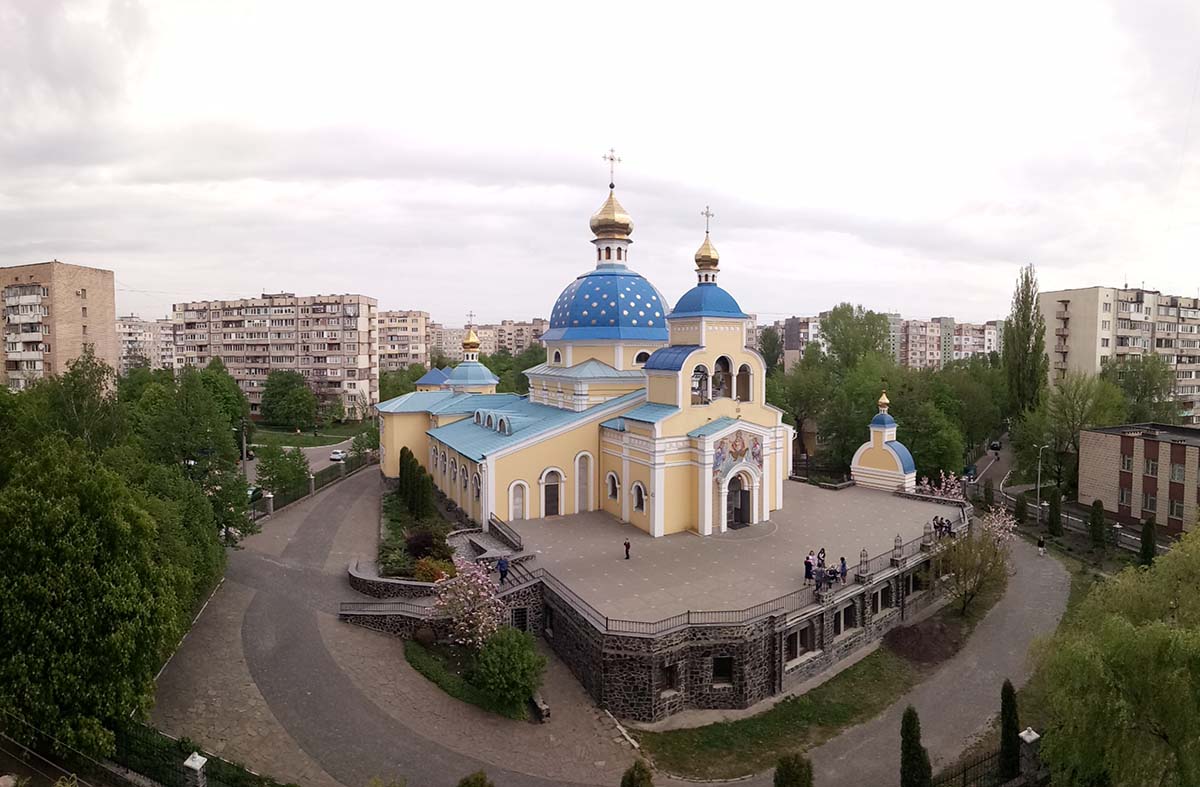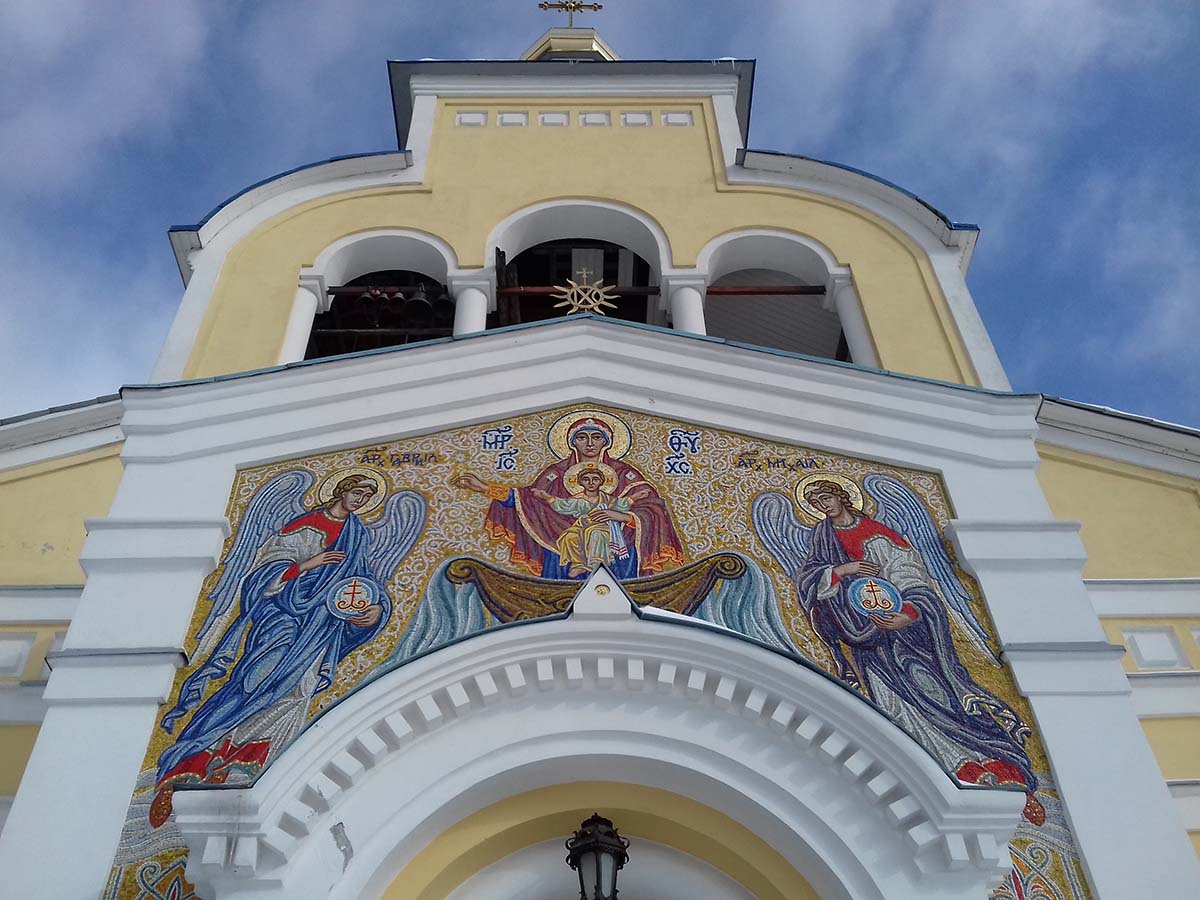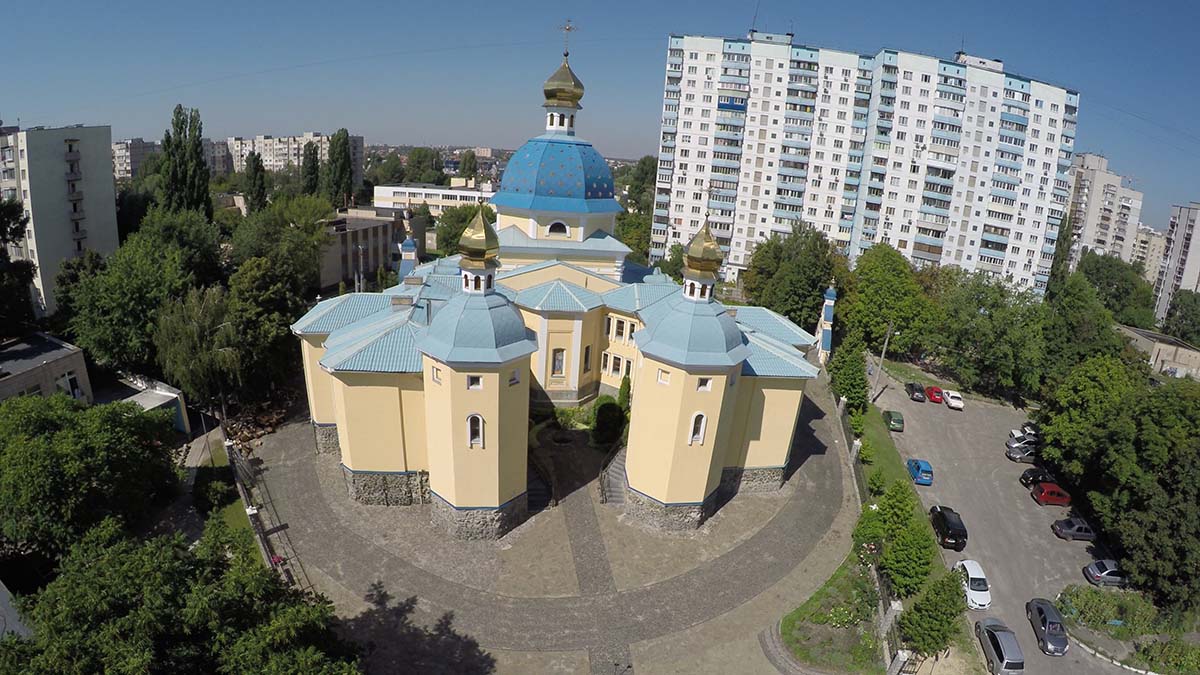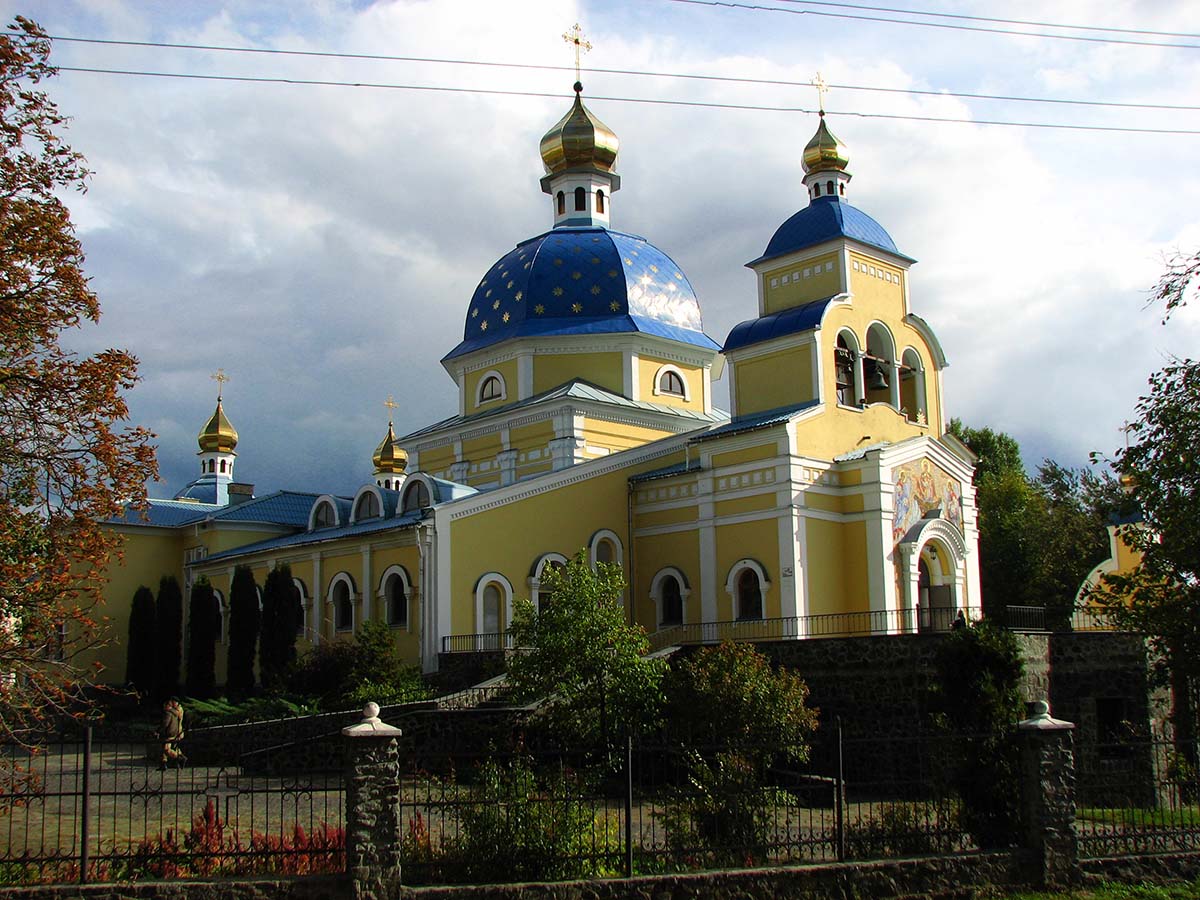The Temple of the Life-Giving Spring has a rich history that goes back about 350 years. For the first time, the church in the name of the Most Holy Theotokos of the Life-Giving Spring in Bratskaya Borshchagovka was erected approximately between 1632 and 1657, after the founding of the village itself, which arose on the lands granted “as a patrimony” to the Kyiv fraternal Epiphany Monastery by the Cossack hetman Ivan Kulag-Petrazhitsky. This is evidenced by the dedicatory inscription on the old Gospel, donated to the temple in 1657.
Over time, the village was practically deserted (the reasons for this phenomenon are not reliably known) and the temple lost its parishioners, began to collapse, and then was completely closed. The church, again wooden, was rebuilt almost anew around 1740 – 1747 by order of Metropolitan Raphael of Kyiv. The decision of Metropolitan Arseny of Kyiv and Galicia, after inspecting the Church of the Life-Giving Spring, on August 17, 1861, was to build a new stone church in place of the wooden church – it was announced that donations were being collected for the construction of a new church. After collecting the necessary funds, construction of a new temple building began in 1866. After geological surveys of the building site, the exact location for the future church was identified and determined, which was located in the center of the parish and was the highest place in the village. The construction of the church was completed in 1872.
At the end of the 1920s, the activities of the UAOC were banned, and most of its priests were repressed. For this reason, in 1926 the church was subordinated to the Russian Orthodox Church, services were held intermittently until 1935. After which the domes and bell tower were demolished and the property was looted. The miraculous icon of the Mother of God of the Life-Giving Spring disappeared without a trace. In 1936, the temple was closed altogether on the grounds that the religious community had disintegrated. Just before the war, chapels with wells over clean springs, known since time immemorial, were also destroyed.
At first, the temple premises were planned to be used for cultural and educational needs, but later a collective farm granary was built. The spiritual life of the parish resumed only in 1941 with the beginning of the temporary German occupation, at the request of priest Ivan Kovalenko and the community. The church was reopened, but it was renamed the Church of the Kazan Icon of the Mother of God, apparently due to the loss of the local image of the Life-Giving Source. In 1968, the church was finally closed, and the premises were given to a film distribution factory. Then it was transferred to the balance of the Central Park of Culture and Recreation – the park management tried to set up a club here.
In the 1980s, when the intensive development of South Borshchagovka was underway, city authorities decided to use the building of the former Church of the Kazan Icon of the Mother of God as a youth leisure center. The project envisaged building up the remains of the church, which were preserved, into a two-story part with a basement; it was planned to create some kind of dome above the vault. At the same time, the walls of the church were partially destroyed, their plastic was destroyed. The church was to be buried in the arms of the Olympia fencing club. Since 1987, construction work has been carried out by the general contractor Elektronmash, but it has been carried out unsatisfactorily due to poor financing.
In 1992, the Council of People’s Deputies of the region decided to transfer the unfinished Olympia center to the local communities of the UAOC and UOC, according to their request. In 1995, the Church of the Kazan Icon of the Mother of God of the Ukrainian Orthodox Church of the Kyiv Patriarchate began worshiping in the premises of the center. Due to the reconstruction and destruction that the church building suffered, it lost its original appearance and significant research had to be carried out to restore it. Already in the fall of 1996, in the completed part on the western side of the temple, where premises for lectures were previously planned, a temporary temple was built, in which services began to be held (now it is the lower temple dedicated to the Kazan Icon of the Mother of God).
During 1997-1998, 2 towers were built in the eastern part of the temple and small domes on them, as well as a bell tower. On November 5, 1998, a central dome resembling a blue starry sky was installed. On November 4, 1999, on the feast of the Kazan Icon of the Mother of God, a Grand Cross was installed on the central bathhouse. On March 16, 2002, the consecration of the Church of the Life-Giving Source took place, which was performed by His Holiness Patriarch of Kiev and All Rus’-Ukraine Filaret – so the temple became the center of the Svyatoshinsky deanery of the UOC KP. The church operates a Sunday school for children, a library of spiritual literature has been created, and there is a charity canteen where the infirm and elderly are fed daily.
Where is the Temple of the Life-Giving Spring (Kazan Icon of the Mother of God)?
Simirenko street, 12
401-42-94, 096 883 88 11
08:30-19:00
morning worship Mon-Sat: 09:00, Sun: 07:15, 09:00; evening service: 17:00




